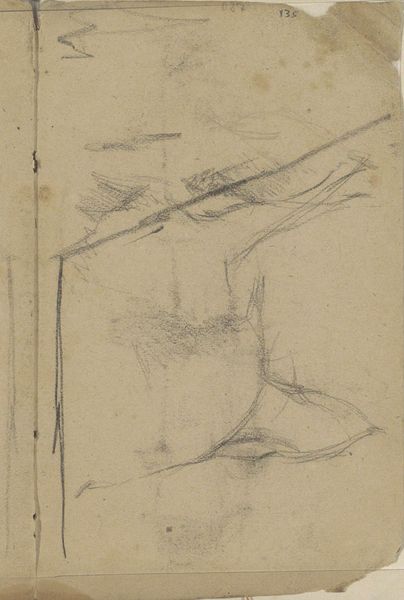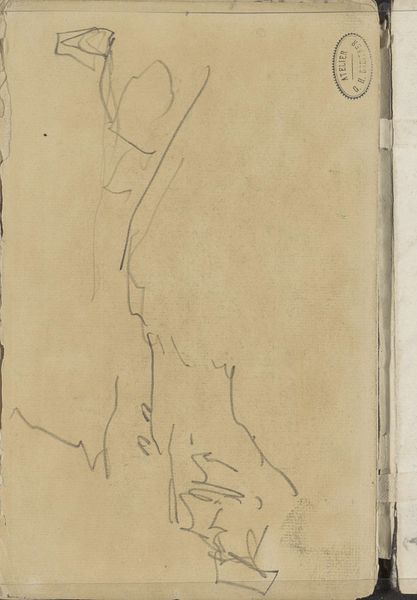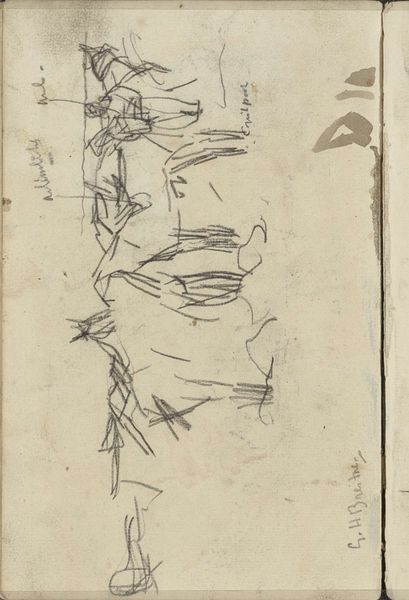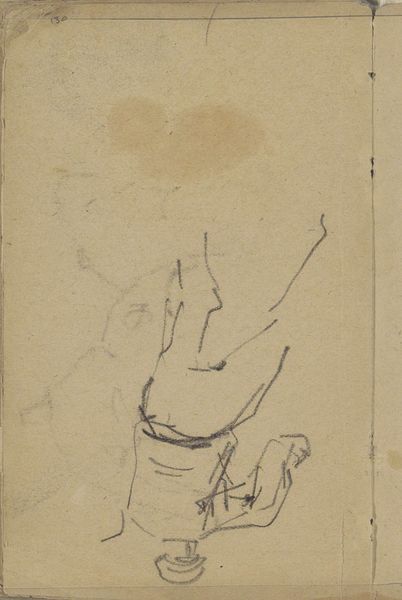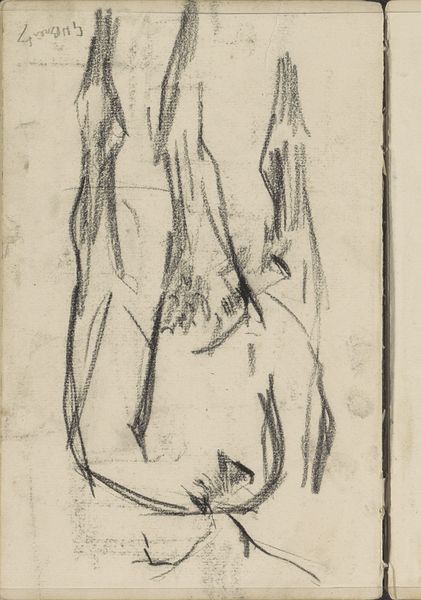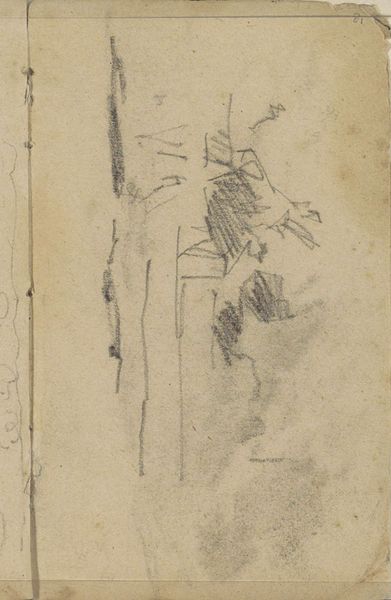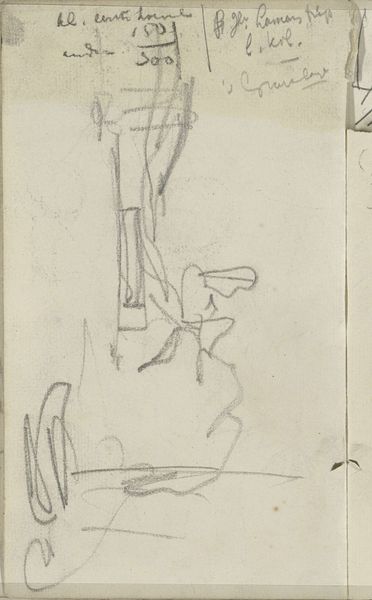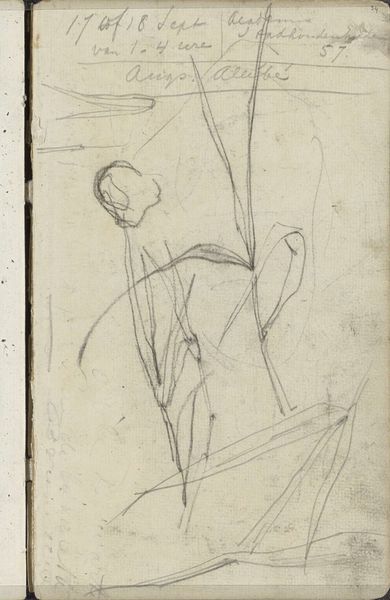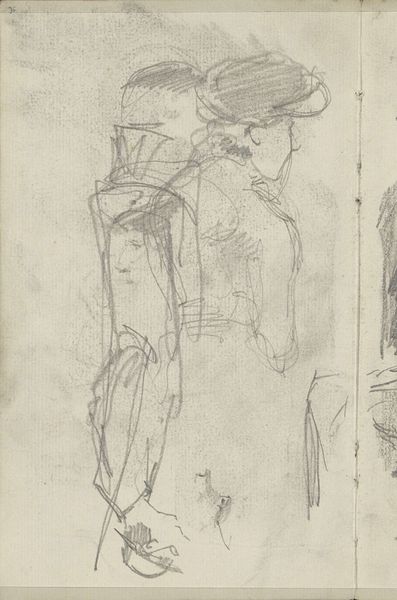
Studie, mogelijk een architectuurstudie of een landschap c. 1889 - 1904
0:00
0:00
georgehendrikbreitner
Rijksmuseum
drawing, paper, pencil, architecture
#
drawing
#
landscape
#
paper
#
form
#
pencil
#
line
#
architecture
Copyright: Rijks Museum: Open Domain
Editor: Here we have George Hendrik Breitner’s “Studie, mogelijk een architectuurstudie of een landschap,” created between 1889 and 1904, a pencil drawing on paper. Its energetic lines seem to be groping to resolve a subject, as if capturing an idea mid-thought. What stands out to you? Curator: What immediately arrests my attention is the interplay between line and form, the tension arising from unresolved lines creating a captivating sense of dynamism. Consider the thickness and directionality of the pencil strokes; how do they define the skeletal structure of what appears to be both architectural and organic? Editor: Yes, I see that. The lines definitely vary, some are bold and certain, others are faint and almost hesitant. Do you think Breitner was purposefully leaving the forms undefined? Curator: Precisely! This is where formalism thrives. Rather than concerning ourselves with the *what*—the definite subject—we should perhaps prioritize the *how*. Notice how the strategic use of line weight suggests depth and spatial relationships, almost independent of recognizable forms. This lends the sketch a certain self-referential quality, where the process of creation is foregrounded. It almost transcends its potential subject matter. Editor: So, the form is the content? Curator: Essentially. It invites contemplation on pure visual language – line, texture, and composition. Does that encourage you to consider the sketch as a complete artistic statement in itself, rather than merely a preparatory study? Editor: I never thought about a drawing as a finished idea…I’ve always seen them as steps to other pieces, like paintings. I do think this sketch, even though unresolved, it has an energy, an emotion, that perhaps a more finalized painting wouldn't have. Curator: Precisely. Sometimes it’s the ‘almost there’ quality that breathes the most life into the aesthetic experience.
Comments
No comments
Be the first to comment and join the conversation on the ultimate creative platform.
